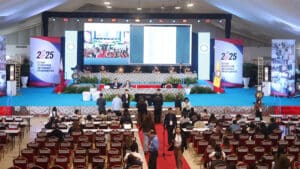CEBU Pacific Air, the country’s biggest budget airline, saw passenger volume in the first seven months of 2016 jump close to 8 percent.
The carrier, which was projecting to carry 20 million passengers this year, said traffic during the period already hit 11.55 million passengers. Capacity during the seven months through July also rose 1.1 percent, meaning seat load factor, a measure of flight utilization, improved to 87 percent from 81.5 percent.
For the month of July alone, Cebu Pacific saw passenger volume grow 3.1 percent to 1.52 million passengers. Seat load factor was at 85.9 percent, better by 6.7 percentage points.
The carrier operated some 79,000 flights during the seven-month period, better by 0.2 percent from a year ago.
The figures indicated continued resiliency in the air travel business, especially for budget carriers like Cebu Pacific. The airline earlier said it was keen on expanding its business in the region.
Opening up new long-haul routes, however, might take the backseat for now, according to Capa-Center for Aviation. It
said last week that plans for Melbourne in Australia and Honolulu in Hawaii have been “delayed.”
Capa said recently acquired Airbus A330s planes would instead be used in the region to help improve aircraft slot efficiency given congestion issues at Manila’s Ninoy Aquino International Airport.
Growth in the demand and lower fuel prices, a major expense in the airline business, have propped up profits of Cebu Pacific. Miguel R. Camus



